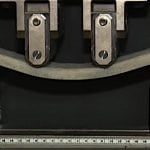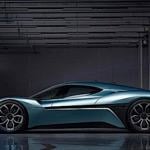BMW has unveiled its lightweight, four-seat, all-electric car, the i3, a car that “opens a new chapter” of design language, tailor-made for electric vehicles. The sporty version, the i8, will be coming soon. Built of aluminum and carbon fibre, the car’s passenger compartment offers “outstanding” protection to passengers. It is the first mass-production use of carbon fibre, made possible by ten years of “intensive” research and experience by BMW. The entire car weighs just under 1,200 kilograms, though it provides the same strength as much heavier steel, according to BMW.

A 22-kWh lithium-ion battery powers the i3, giving it a range of 130–160 km in everyday driving. This range can be extended by using the ECO PRO option, which adds 20–40 kilometres. To extend the range even further, drivers can opt for the Range Extender, a gasoline-powered engine that can be mounted next to the electric motor and that keeps the battery from draining below a certain level. With the Range Extender functioning, the car has a total range of about 300 kilometres.
The high-voltage battery is positioned in the drive module so that it is protected against outside “influences” and has a specially designed heating and air-conditioning unit to control temperature fluctuations, ensuring maximum life of the battery. The battery is guaranteed for 8 years or 100,000 kilometres.
Speaking at the unveiling in New York City, Dr. Norbert Reitholer, Chairman of BMW AG called the i3 “revolutionary,” a car that the automobile industry had waited “well over a century” for, one that was “born electric” and an industry first. He then described how the i3 sets “new benchmarks in sustainable mobility” and will be “the perfect solution” for New Yorkers and other drivers in high-density urban settings.
“In the brand-new architecture, we use carbon fibre for the passenger cell—a first in high-volume car production. Our expertise in manufacturing with this material makes the passenger cell extremely strong and light weight. We produce the carbon fibre material using hydroelectric power. And we build the BMW i3 using wind power.”
To fully charge the battery takes three hours from a home, wall-mounted charge station, though it can be driven with an 80 per cent charge that takes just twenty minutes to deliver. A charging station finder app is included with the i3 to help drivers find public charging options.
BMW says that the i3 can accelerate from 0–100 km/h in 7.2 seconds, and achieve a top speed of 150 km/h.

































